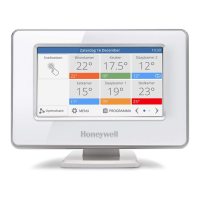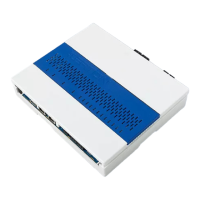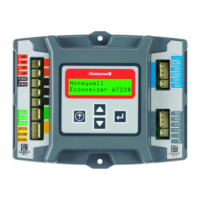ENGINEERING MANUAL OF AUTOMATION CONTROL
ELECTRONIC CONTROL FUNDAMENTALS
123
Fig. 2. Typical Electronic Control System Components.
RELATIVE
HUMIDITY TRANSMITTER
DIGITAL SENSOR
SPST/SPDT
SENSORS/TRANSMITTERS
INDICATING
DEVICES
ACCESSORY
DEVICES
CONTROLLERS
UNIVERSAL
CONTROLLER
ENTHALPY
CONTROLLER
RELATIVE
HUMIDITY
CONTROLLER
TEMPERATURE
CONTROLLER
ENTHALPY TRANSMITTER
INDICATING
DEVICES
INTERFACING
DEVICES
OUTPUT
DEVICES
FINAL CONTROL
ELEMENTS
FAN/PUMP
POSITIVE RTD,
THERMISTOR, OR
THERMOCOUPLE
123.4
LED PANEL
ANALOG
GAUGE
DIGITAL
DISPLAY
TWO-POSITION
ACTUATOR
MODULATING
ACTUATOR
E/P
TRANSDUCER
SEQUENCER
OR STEP
CONTROLLER
C3097
PRESSURE
TRANSMITTER
DIFFERENTIAL
PRESSURE TRANSMITTER
CONTACTOR
OR RELAY
OVERRIDE
REMOTE
SETPOINT
ADJUSTMENT
MICRO–
PROCESSOR–
BASED OUTPUT
INTERFACE
OVERRIDE
MICRO–
PROCESSOR-
BASED
INTERFACE
LED PANEL
ANALOG
GAUGE
DIGITAL
DISPLAY
123.4
REMOTE
SETPOINT
ADJUSTMENT
OHMS
POWER
SUPPLY
TRANSFORMER
VALVES
DAMPER
OHMS
MANUAL
CONTROL
SPDT
12V
24V
TEMPERATURE,
HUMIDITY
TEMPERATURE SENSOR
mV
— Some RTD element resistances are as low as 100 ohms.
In these cases, the resistance of the lead wires connecting
the RTD to the controller may add significantly to the
total resistance of the connected RTD, and can create an
error in the measurement of the temperature. Figure 3
shows a sensor and controller in relation to wire lead
lengths. In this figure, a sensor 25 feet from the controller
requires 50 feet of wire. If a solid copper wire with a dc
resistance of 6.39 ohms/Mft is used, the 50 feet of wire
has a total dc resistance of 0.319 ohms. If the sensor is a
100-ohm platinum sensor with a temperature coefficient
of 0.69 ohms per degree F, the 50 feet of wire will
introduce an error of 0.46 degrees F. If the sensor is a
3000-ohm platinum sensor with a temperature coefficient
of 4.8 ohms per degree F, the 50 feet of wire will introduce
an error of 0.066 degrees F.
Significant errors can be removed by adjusting a
calibration setting on the controller, or, if the controller
is designed for it, a third wire can be run to the sensor
and connected to a special compensating circuit designed
to remove the lead length effect on the measurement. In
early electronic controllers, this three-wire circuit was
connected to a Wheatstone Bridge configured for lead
wire compensation. In digital controllers, lead wire
compensation on low resistance sensors may be handled
by software offset.
Fig. 3. Lead Wire Length.
—The usable temperature range for a given RTD sensor
may be limited by nonlinearity at very high or low
temperatures.
—RTD elements that provide large resistance changes
per degree of temperature reduce the sensitivity and
complexity of any electronic input circuit. (Linearity may
be a concern, however.)
A sensor constructed using a BALCO wire; is a commonly
used RTD sensor. BALCO is an annealed r esistance allo y with
a nominal composition of 70 percent nickel and 30 percent
iron. A BALCO 500-ohm resistance element provides a
relatively linear resistance variation from –40 to 250F. The
sensor is a low-mass device and responds quickly to changes
in temperature.
ELECTRONIC
CONTROLLER
SENSOR LEAD WIRES
25 FT
SENSOR TO CONTROLLER
SENSOR
C3106

